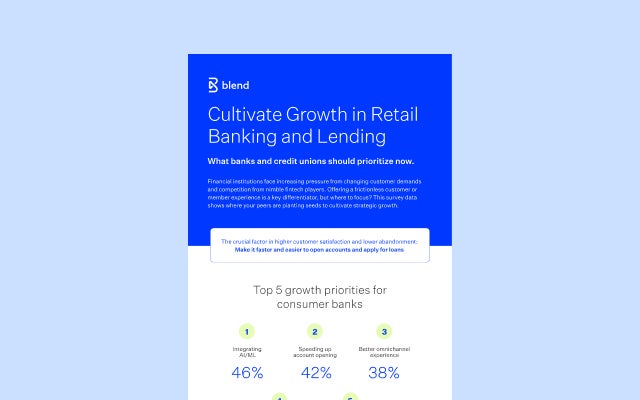July 7, 2022 in Thought leadership
How breaking down data silos can improve banking experiences
Financial institutions can gain a more comprehensive picture of the customer and deliver modern, personalized experiences with data centralized in a single platform.

Data silos are a significant challenge for many financial institutions across the world.
This challenge is, in part, a result of managing legacy systems. In fact, 95% of global banking executives believe that outdated systems and core banking platforms prevent them from optimizing the use of their data.
Compounding the problem is the spaghetti architecture makeup of some IT stacks.
Much like your data, you can get your insights centralized here.
Subscribe for industry trends, product updates, and much more.
For example, it’s not unusual for a financial institution to have one system for lead management, another for customer relationship management, and several more for initiating, processing, and tracking applications — and depending on their respective ages, each lacks the connectivity advantages offered by today’s modern APIs. McKinsey estimates that it would cost a medium-sized bank around $50 million to integrate its old systems effectively, making this approach infeasible for most financial firms.
But doing nothing isn’t an option either. The lack of data exchange between systems can have a negative impact on operational efficiency and, in the end, on customer experiences. While financial institutions have access to potentially helpful customer information, including their assets and income, upcoming life events, and credit scores, the inability to access this information in a centralized way can make it difficult to deliver the great customer experiences that should follow.
Breaking data silos to deliver better customer experiences
Today’s consumers expect personalized experiences that are rewarding, emotionally connected, and that seamlessly integrate with their way of life.
But financial institutions are struggling to deliver on these expectations. Nearly half of customers say their present banking relationship is failing at being rewarding (49%), emotionally connected (48%), and personalized (44%). Breaking down data silos can help financial firms do better for their customers in three key ways:
1. They can deliver the solutions customers are looking for
With a single, unified system that supports all channels and product lines, bank employees can consistently deliver the solutions customers actually need.
2. They can react with efficiency and speed
With better, faster access to all the information they need about their customers, financial staff can improve response times and overall time to approval.
3. They can make the transition to trusted advisor
Financial staff can demonstrate that they understand their customers’ needs and can deliver products or services to help satisfy them.
How breaking data silos can unlock better personalization
We know that today’s consumers expect more personalized services — and there’s data to support it. According to recent research conducted by Forrester Consulting on behalf of Blend:
- Almost three-quarters of consumers believe product offers are more valuable when they’re contextually relevant.
- 65% of consumers say banks should make it easier to find and shop for financial products.
- 50% of consumers want their bank to be more proactive about giving them relevant financial information and advice that contributes to their financial well-being.
By breaking data silos, financial institutions can deliver personalization more effectively — and better position themselves against the competition.
Streamlining the way they operate and removing many of the inefficiencies that come with juggling multiple systems can help financial firms deliver a more sophisticated and holistic personalization effort. As a result, they can be more effective at driving acquisition and converting part-time transactions into lifelong relationships.

Want to learn more about the future of financial services?
Find out what we're up to!
Subscribe to get Blend news, customer stories, events, and industry insights.


